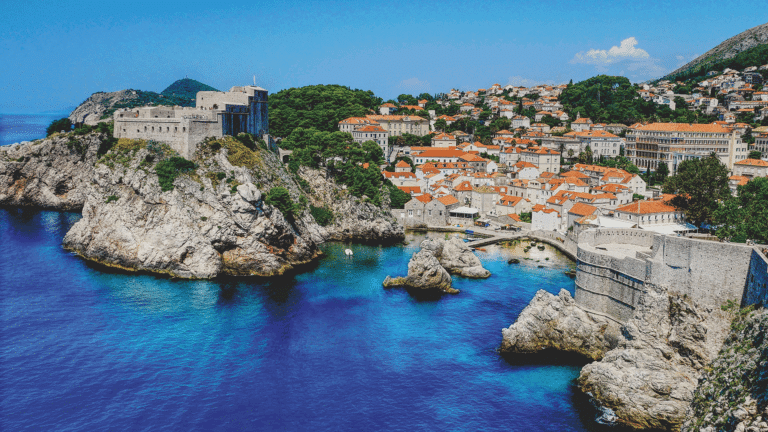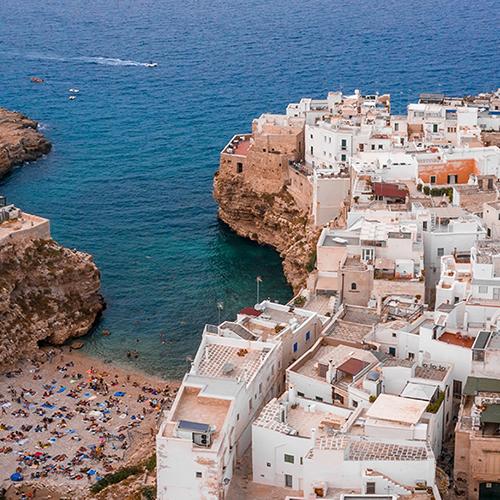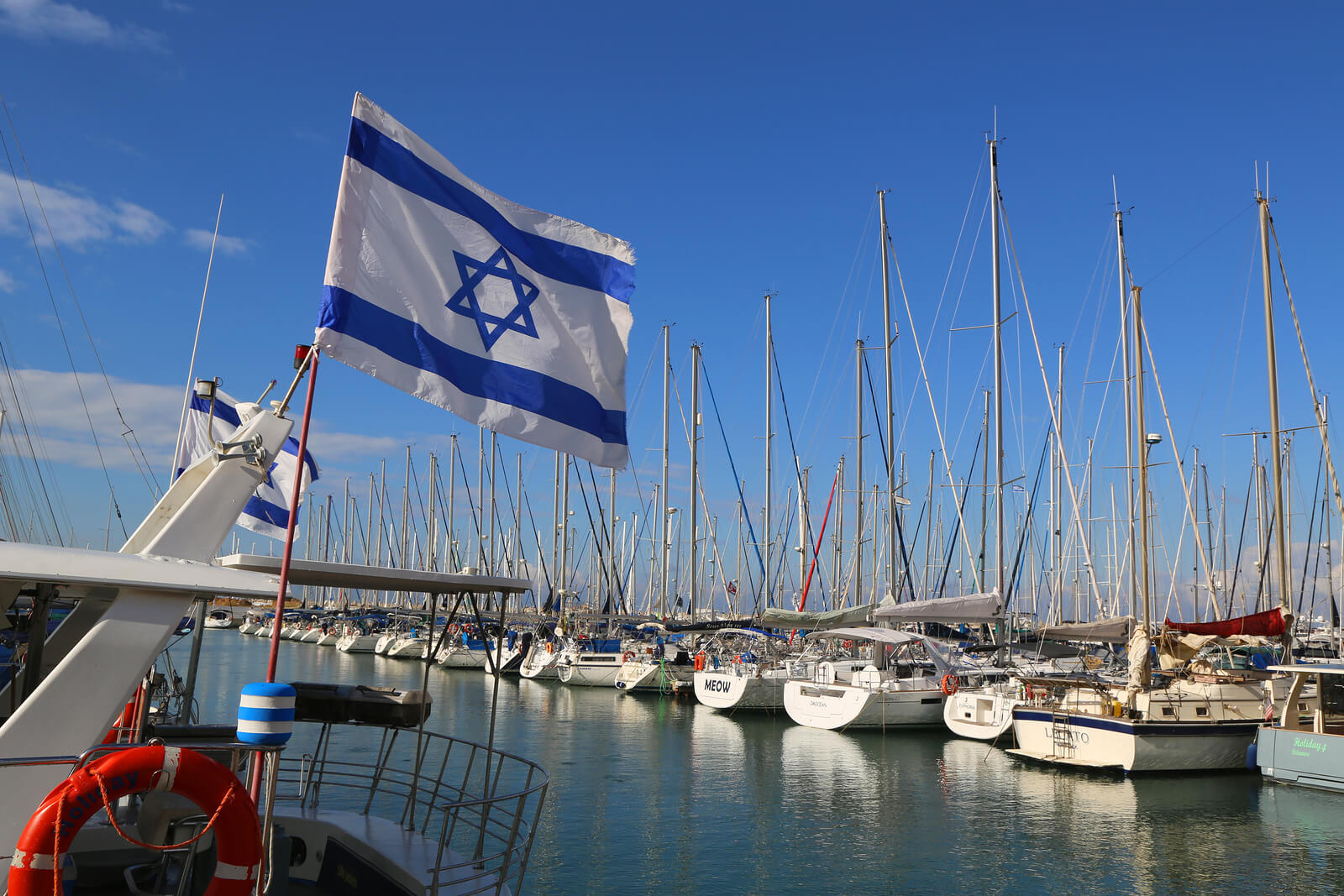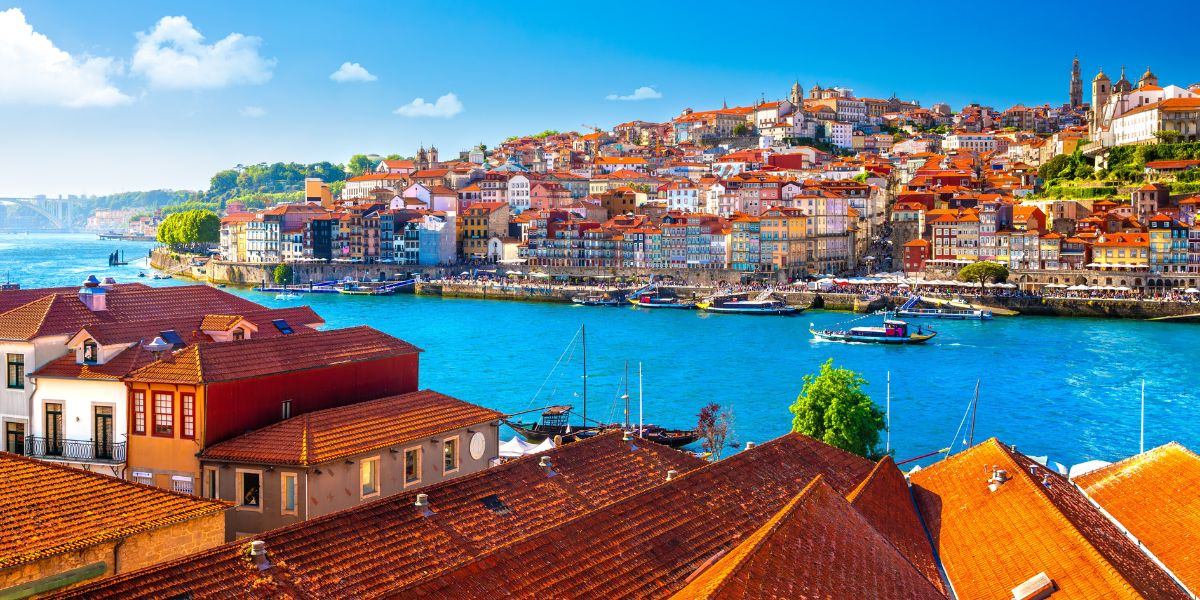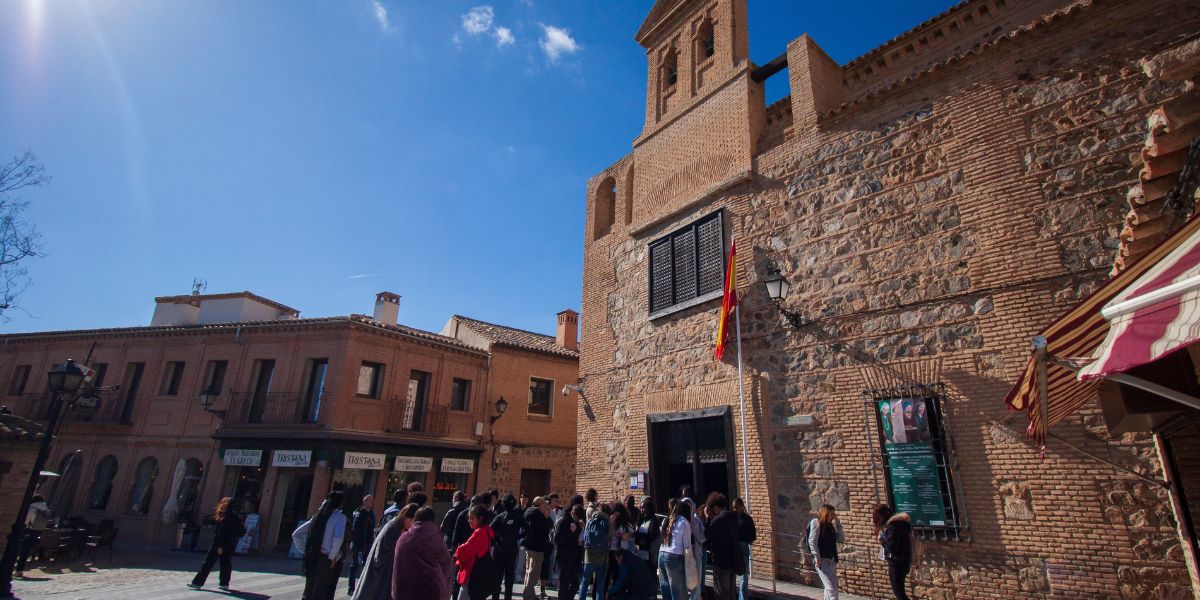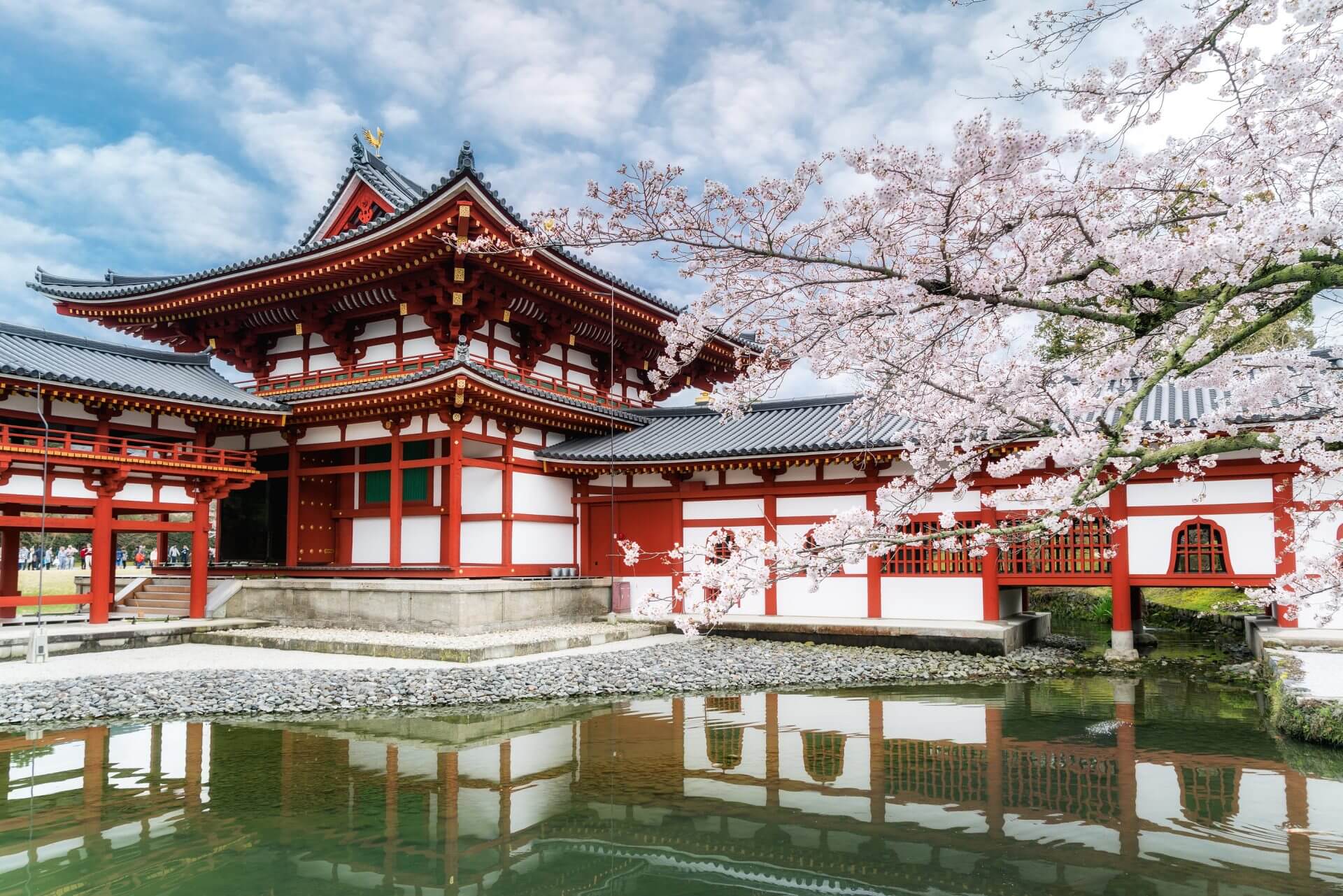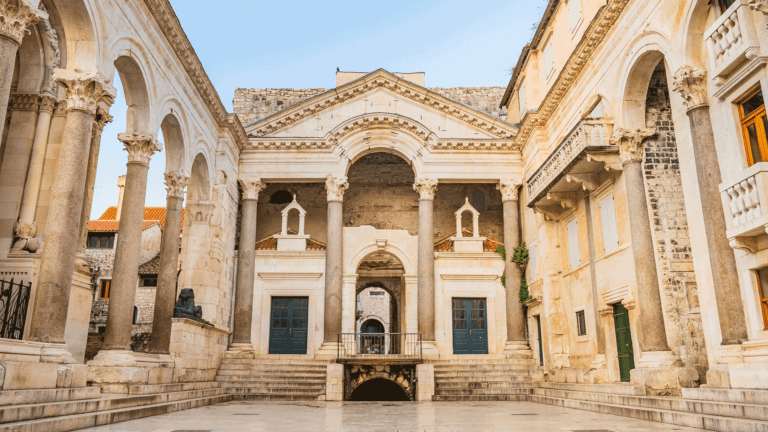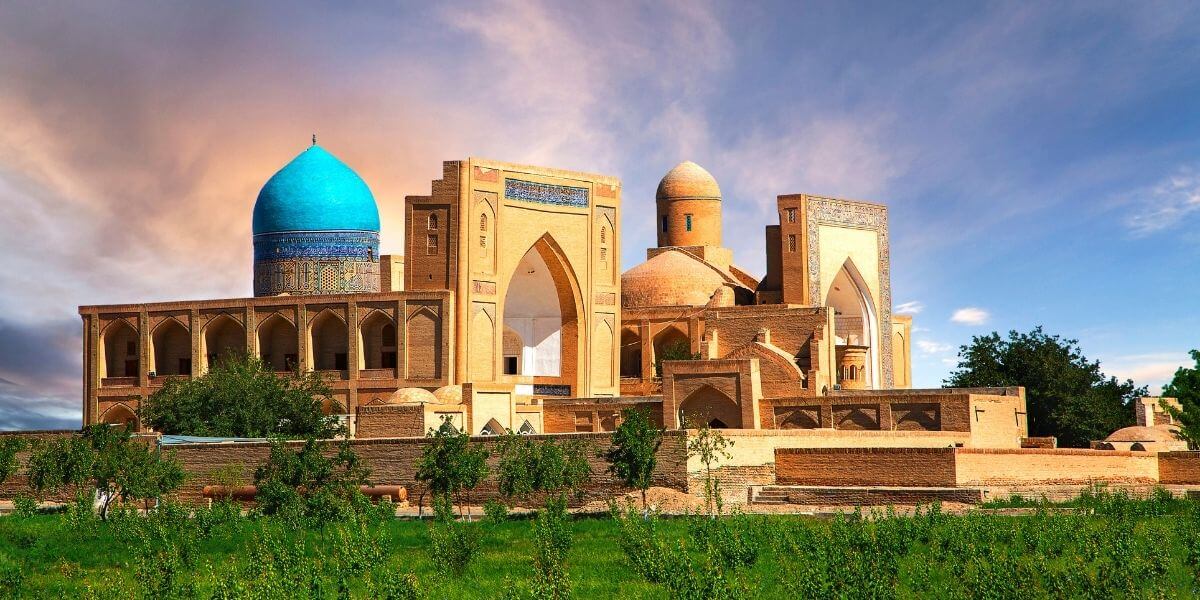The history of the Jews in Poland is long and complicated and has been marked by periods of great prosperity and scholarly excellence, as well as absolute tragedy, devastation, and genocide. Today we can explore this fascinating history on Jewish heritage tours in Poland.
Polish cities are living monuments to the history of Polish Jews who once lived in them and the ones that now are creating a new Jewish community in Poland.
Today, one of the best ways to learn about the history of Jews in Poland is to visit historic Polish cities. On such Jewish heritage tours, you can discover the stories of joy and tragedy that surround those complicated locations, as well as meet current members of the Jewish population in Poland.
But where should you start when you’re on a tour of Poland? We’ve compiled a list of some of the most interesting historic Polish towns, old Jewish villages and Jewish communities in Poland to learn about Jewish history in Poland.
When did Jews start living in Poland?
Jews started living in Poland at around the time of the First Crusade in 1098. Jews were encouraged to come by the tolerant regime of Boleslaw the III, and they settled all across Poland and in the adjacent Lithuanian territory. Eleventh century Poland was really on the fringes of “civilized” Europe. The Jews who moved to Polish towns must have been genuinely adventurous. Poland was a new nation state and Jewish culture in Poland grew alongside the emerging Roman Catholic Polish culture.
Jewish communities in Poland were initially built around the mercantile centers. Interestingly, much of what we know about early Poland comes from the writings of a famous Jewish traveler Ibrahim ibn Yakoub (Avraham ben Yaʿakov) a Sephardi merchant who visited Poland under King Mieszko 1st.
During this early period, Polish towns like Krakow, Poznan, GIecz, Gniezno and possibly the fortified island of Ostrow Lednicki are likely to have been home to small Jewish communities, or at least to have received travelers and merchants.
Which Polish King invited the Jews?
Jews found refuge in Poland after King Casimir the Great invited them to his land in 1343. At the time, there were expulsions and massacres in Western Europe, and the Jewish people were looking for a safer place to live.
With all this history going for the Jews in Poland let’s get into the cities you should consider visiting as part of your next solo trip to Poland or as part of an organized group tour to this interesting country.
Old Jewish Villages and Shtetls in Poland
Modern interest in Poland’s Jewish history and heritage mainly focuses on the large and vibrant Jewish communities of cities like Krakow and Lublin. Jewish culture in Poland certainly flourished in the Jewish quarters of the big cities with their centers of learning and commerce.
However, many Jewish communities in Poland were rural or lived in small towns. There were hundreds of shtetls (also called shtots or dorfs) scattered across Poland, Belarus, Lithuania and other parts of Eastern Europe. There Old Jewish villages and Yiddish speaking market towns produced unique cultures, but were depopulated by mass emigration following 19th century pogroms, and then by the ravages of the Holocaust.
There is a fascinating virtual shtetl in the Polin museum, and a tailored Gil Travel tour of Poland can include visits to some of the surviving towns that used to be Shtetls. If your ancestors were part of a tight-knit shtetl community, we may be able to arrange a private tour of the area. Despite the devastation of World War Two, you can still experience something – or at least gain some insights – into Jewish shtetl culture in Poland.
Discover the history of Jews in Poland in Krakow
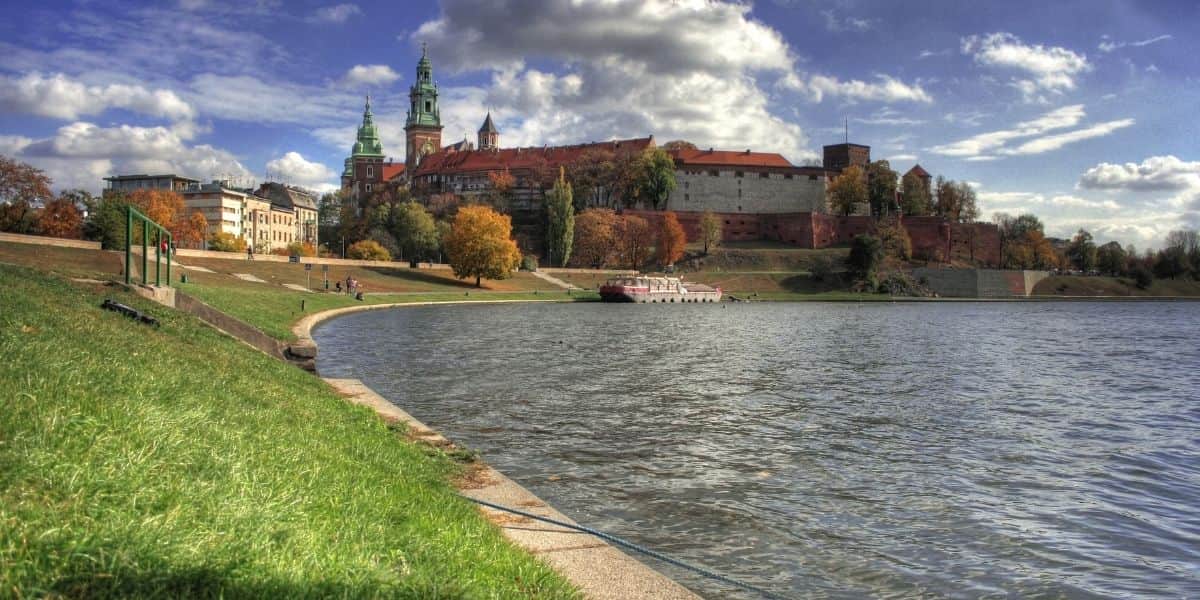
The Jewish community in Krakow dates back to the early Middle Ages. Krakow’s Jewish population thrived in the Kazimierz district, which became the main Jewish quarter.
Today, the Kazimier district is experiencing a revival, and visitors can go for Jewish food, synagogues, and cultural activities. Kazimierz is also home to art galleries, shops, and vintage clothing stores.
Jewish history in Krakow is on full display is the Remuh Synagogue and Cemetery. The Remuh Synagogue, built in the 16th century, is one of the few synagogues in Kazimierz that survived the Holocaust and remains an active place of worship. It is usually open until 6:00 P.M and can be visited by tourists. Another great stop in Krakow is the Galicia Jewish Museum, which offers exhibitions and educational programs dedicated to preserving the memory of Jewish life in Galicia, including Krakow.
One of the best times to experience Jewish Krakow is during the annual Jewish Culture Festival in Krakow. Visitors come from all over the world to showcase Jewish culture and life, and the city comes alive with Jewish events and exhibits.
Learn about the Polish Jews of Tarnow

The Jewish community in Tarnow dates back to the late Middle Ages.
In fact, before World War II, Jews were about half of Tarnow’s population. Many worked in garment and hat manufacturing. While 700 Jews tried settling in Tarnow after the Holocaust, many left due to insecurity and hostility. There are no Jews in the town today.
Today, you can find traces of Tarnow Jewish life in the local cemeteries and several museums that house Jewish artifacts. The Tarnow Regional Museum and museums in Bochnia and Babrowa Tarnowska both house Jewish artifacts, including several Torahs and records from the prayer house in Tarnow.
If you visit Zydowska and Weklarska streets, you can see the outline of the former Jewish quarter in the city. Some of the frames of the doors have traces of mezuzahs, and the location of the 17th century Tarnow Synagogue destroyed during WWII, is also there. Only the Bimah survived.
The Committee for Renovation of Jewish Monuments in Tarnow launched the Galician Jews Remembrance Days, so now concerts and other events are held in the square where the synagogue was.
Visit one of the most vibrant Polish cities, Warsaw
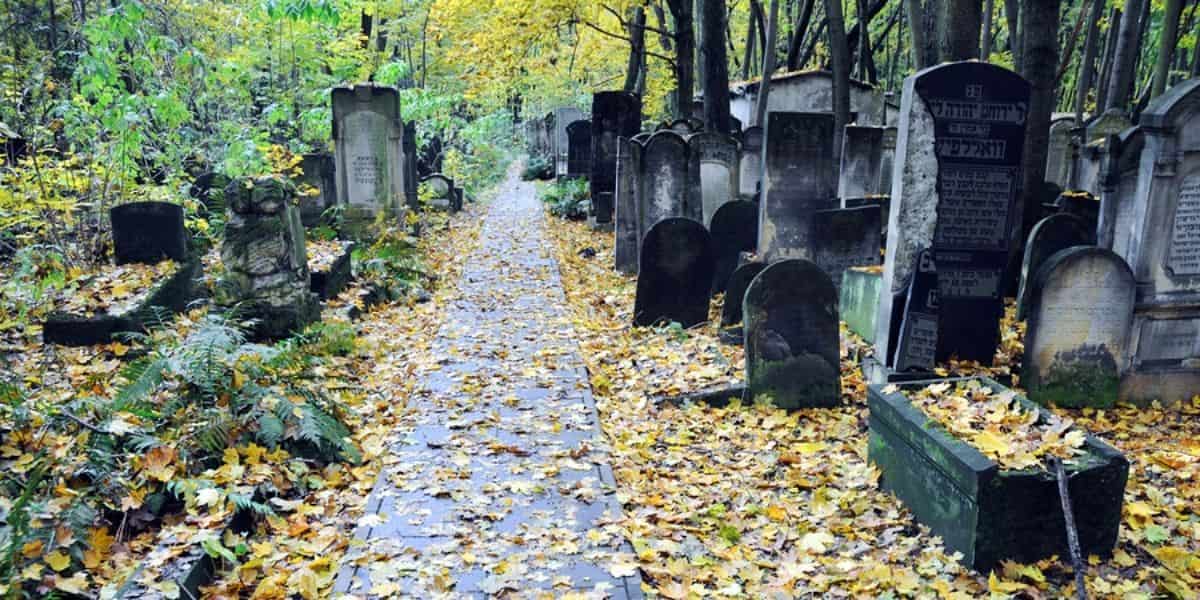
Before world war II, Warsaw was home to more than 350,000 Jews, making it the largest community in both Poland and Europe. It was only second in population to New York City.
Today, Warsaw’s Jewish connection is most related to one of the most important acts of rebellion during World War II.
In 1943, the Jewish resistance in the Warsaw Ghetto bravely fought against the Nazis during the Warsaw Ghetto Uprising. Although the uprising was eventually suppressed, it remains an emblematic symbol of Jewish resistance and heroism during the Holocaust.
Many of those who rebelled in the uprising were young youth group members, making Warsaw an excellent place to take families and children who are involved in youth groups and youth activities in their Jewish communities.
One of the best places to go in Warsaw to learn about the history of Polish Jews is the POLIN Museum of the History of Polish Jews. It tells the story of Polish Jewry from its early beginnings to the present day. It is one of the best places to go to learn about how Jews in Poland lived for thousands of years and is a refreshing stop on a tour that could otherwise be mostly about tragedy and destruction.
Discover the Jewish history in Poland when you visit Rzeszów
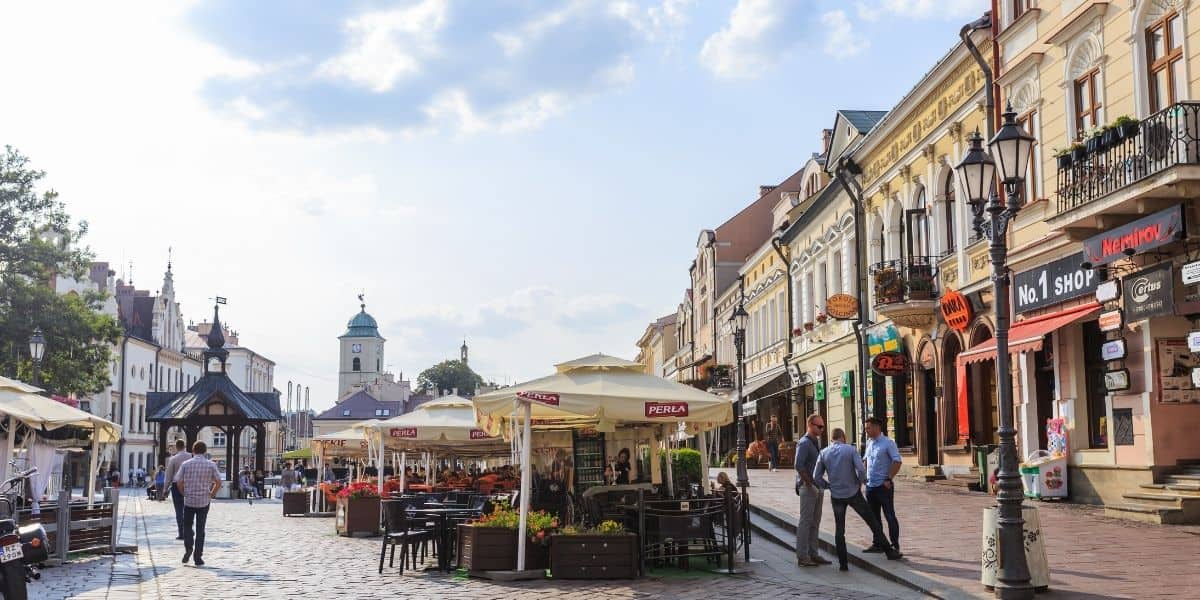
Rzeszów, the largest city in southeastern Poland, has a rich Jewish history that dates back several centuries.
In 1942, the Nazis established a ghetto in Rzeszów, confining Jews to a small area of the city. From there, they were deported to concentration camps, primarily to the nearby Belzec extermination camp. The vast majority of Rzeszów’s Jewish population perished during this time.
Today, you can visit The Old Jewish Cemetery located on Rejtan Street. A memorial plaque and a small monument dedicated to the memory of the Jewish community in Poland stand near the site of the former synagogue.
The Stara Synagogue, from the seventeenth century, is today the home of the city archives. The Duza Synagogue was rebuilt in the 1960s and houses an art gallery and an upstairs cafe.
One of the coolest locations in the city is the Underground Tourist Route. It was built in the 16th century to protect the population against attackers but eventually was an underground marketplace for Jewish grocers.
Learn about Jewish history in Poland in Markowa
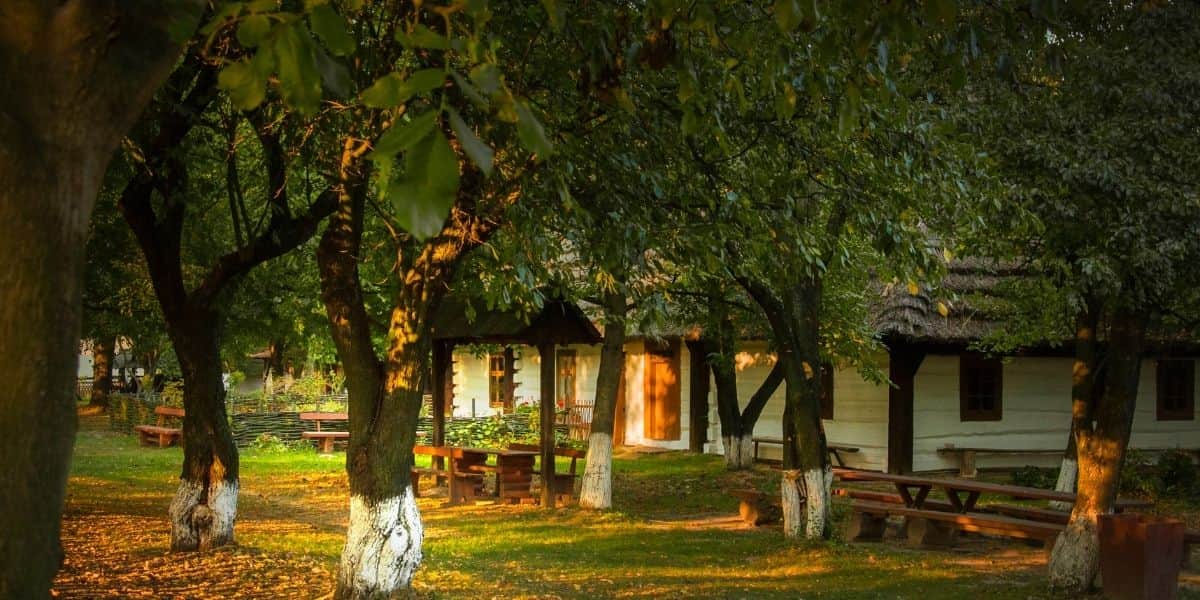
While not exactly a city, Markowa still deserves a place on this list.
During the war, Markowa resident Józef Ulma, his pregnant wife Wiktoria, and their six children provided shelter to their Jewish neighbors. In March 1944, their actions were discovered, and the entire Ulma family, along with the Jewish individuals they were harboring, were executed by the Nazis.
The family was posthumously awarded the title of Righteous Among the Nations by Yad Vashem, the Holocaust Remembrance Center in Israel.
The Ulma Family Museum of Poles Saving Jews in World War II is located in the village and focuses on the stories of individuals who risked their lives to help Jews during the Holocaust.
See the Pardes Festival of Jewish culture in Kazimierz Dolny
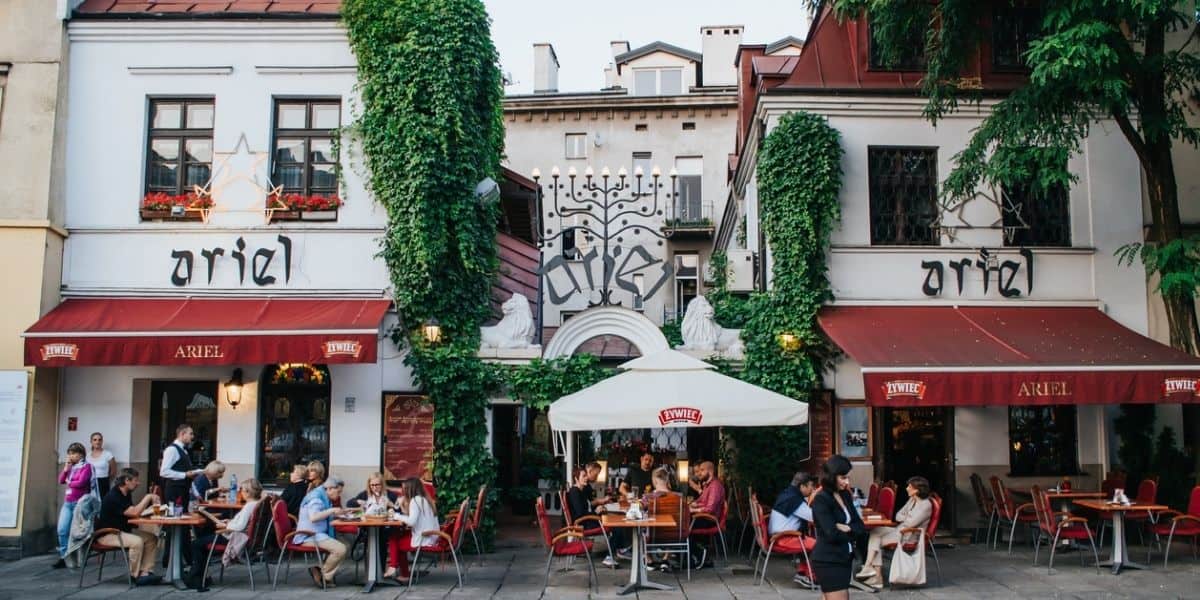
Kazimierz Dolny, a picturesque town situated on the Vistula River in southeastern Poland, shares a name with the Kazimierz district in Warsaw, but this city is worth a section all on its own.
The town alone is beautiful, with lovely houses, streets lined with Renaissance and Baroque facades, a castle, and more.
There is an 18th-century synagogue behind the large square at 4 Lubelska Street. Today it is a cinema, but one of the walls has a plaque commemorating the 3,000 Jews of Kazimierz Dolny murdered during the Holocaust.
The Pardes Festival of Jewish Culture takes place in Kazimierz Dolny, and many Jewish artists were known to have come to Kazimierz.
Discover Jewish history in Poland during the Middle Ages in Lublin
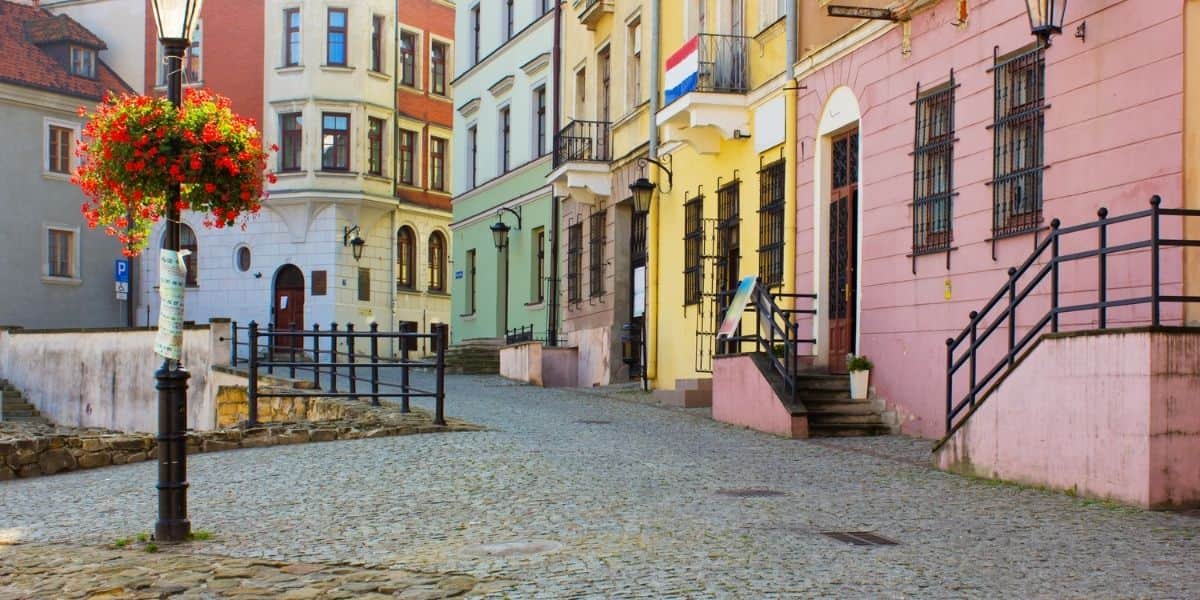
There was a Jewish presence in Lublin as early as the 14th century.
During the Middle Ages, Lublin became an important center for Jewish learning and scholarship. Lublin’s Jewish community played a crucial role in the development and dissemination of Jewish legal and mystical traditions.
Lublin was a center for Polish Jewry in the 17th century, known as the “Golden Age” of Polish Jewry. Synagogues, yeshivas, and Jewish schools flourished, making Lublin a vibrant cultural and religious center. Prominent scholars, such as Rabbi Moses Isserles (known as the Rema), left a lasting impact on Jewish law and customs.
The Lublin Jewish Trail, a marked route through the city, guides visitors to important Jewish sites and offers insights into Lublin’s rich Jewish history.
Efforts have also been made to revitalize Jewish life in Lublin. The Chachmei Lublin Yeshiva, once a prestigious institution, has been restored and transformed into a center for Jewish studies and cultural activities.
Why was Lublin called the Jewish Oxford and the Jerusalem of the Polish Kingdom?
Lublin was called the Jerusalem of the Polish Kingdom and the Jewish Oxford because of its connection to Jewish study. The first Hebrew books and prayer books were published in the city in the 16th century.
Visit the second oldest synagogue in Poland in Tykocin
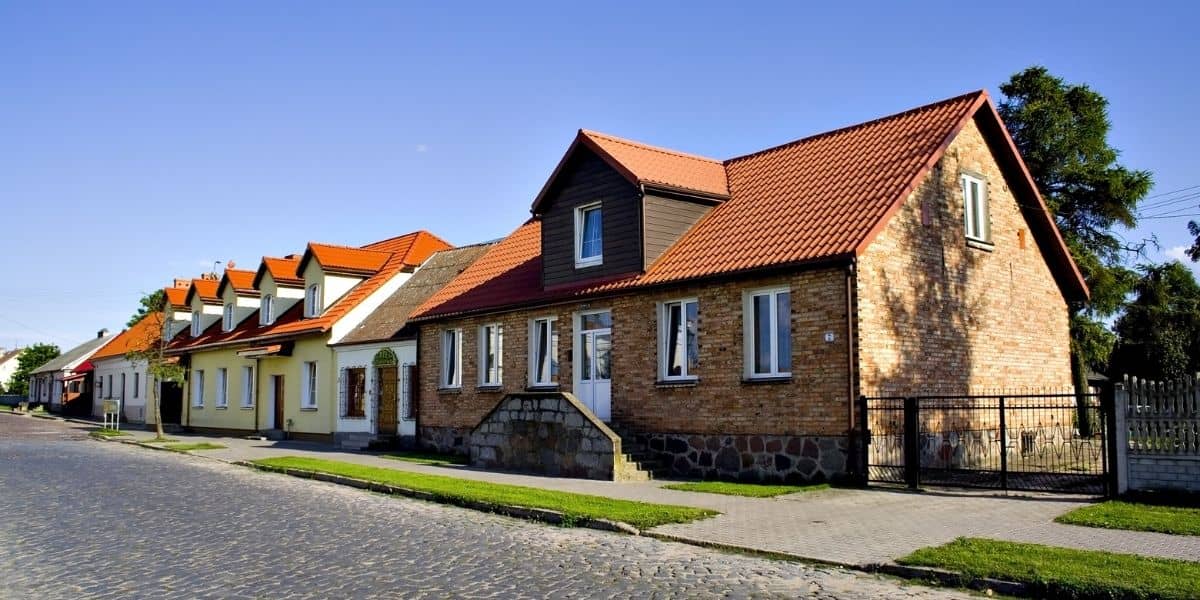
Tykocin, a small town located in northeastern Poland, is smaller than most of the other locations on this list. Still, it is home to the second oldest synagogue in Poland and arguably one of the most beautiful synagogues.
Tykocin Synagogue, built in the 17th century, served as the central place of worship and gathering for the community. It was renowned for its architectural beauty in the mannerist-early Baroque style and religious significance.
In August 1941, nearly all of Tykocin’s Jewish population, around 2,000 people, were rounded up and executed in nearby forests as part of the Nazi extermination policy.
See a ninety-nine-acre cemetery in Łódź
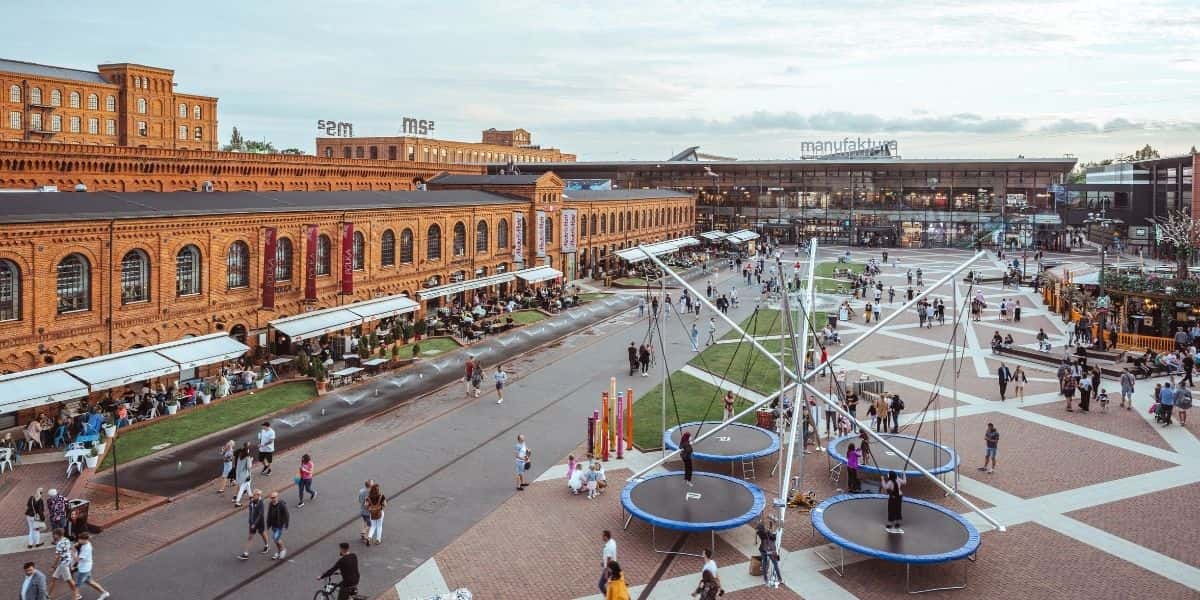
In the late 19th and early 20th centuries, Łódź became home to a large and thriving Jewish population. Jews migrated from various parts of Eastern Europe, seeking economic opportunities and freedom from persecution. They established businesses, factories, and workshops, making Łódź a hub of the textile industry.
During the Holocaust, Lodz was known as the Ghetto, with over 150,000 people cramped inside.
One of the most important Jewish stops in Lodz is the Jewish cemetery. It covered ninety-nine acres and 180,000 graves.
Today you can witness the history of the city at the Radegast Station, once the departure point for Jews deported to concentration camps. It’s a haunting location that now houses a museum and memorial commemorating the Holocaust.
Jewish history in Poland is complicated, but visiting these historic cities in Poland makes it easy to learn and understand. Considering a visit to Poland to learn about Jewish history and heritage? Contact us at Gil Travel, we have more than 50 years of experience in all types of Jewish heritage tours, private, groups, and custom.
